Classroom Garden Ideas: Fun and Easy Projects for Kids
Bringing a garden into the classroom is a fantastic way to engage students with hands-on learning. It can help kids understand science concepts, develop responsibility, and foster a sense of connection to nature. Plus, it’s a great opportunity for them to see the fruits (and vegetables) of their labor.

How can you get started with classroom gardening? Whether you have a small indoor space or outdoor area, there are numerous creative and easy ideas to make it work. Using simple materials and seeds, you can transform your classroom into a green, vibrant learning environment that students will love.
1) Herb Spiral Garden
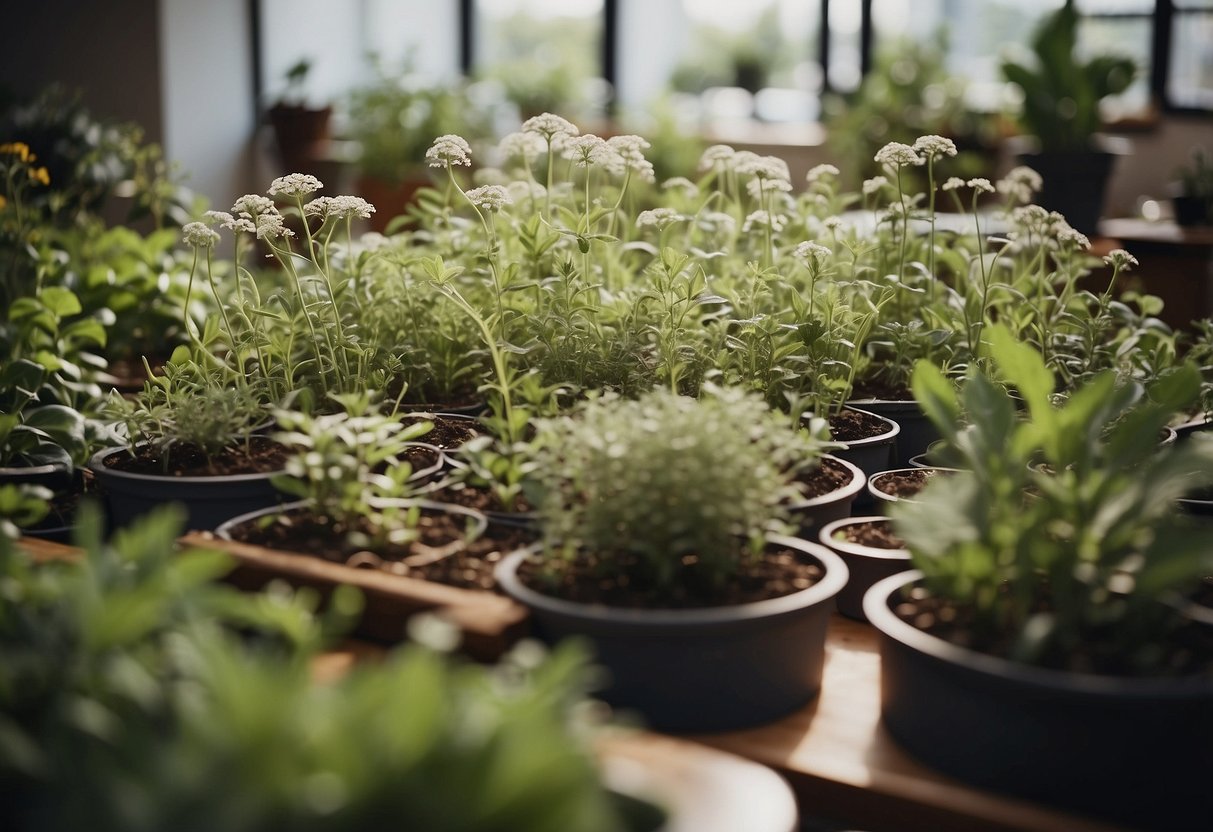
Creating a herb spiral garden is a fun and beautiful way to grow a variety of herbs in a small space. It’s essentially a raised bed that spirals up, allowing you to plant herbs with different water and sun needs in one spot.
Start by using materials you can find in your environment. Stones, bricks, or wood work well. This makes the garden eco-friendly and cost-effective.
Herbs that need good drainage, like rosemary and thyme, can be planted at the top. Plants that enjoy more moisture, such as basil and cilantro, are better placed lower down the spiral. This simple setup can be a great project for your classroom.
2) Sensory Plant Station

A sensory plant station is a fantastic way to engage students. Choose plants that offer different textures, scents, and colors.
For example, lavender provides a calming scent. Lamb’s ear plants have soft, velvety leaves. Bright flowers like marigolds can add a pop of color.
Incorporate edible plants like mint. Kids can smell and taste them, making the learning experience even more interactive and fun.
3) Recycled Container Gardens

Recycled container gardens are perfect for the classroom. They make use of old items you probably already have.
Try using an old teapot as a cute planter. The spout and handle make it easy to move.
Even a toolbox can double as a plant container. Just add soil and seeds.
For more ideas, check out these unique container gardening ideas.
4) Butterfly-Friendly Flower Beds
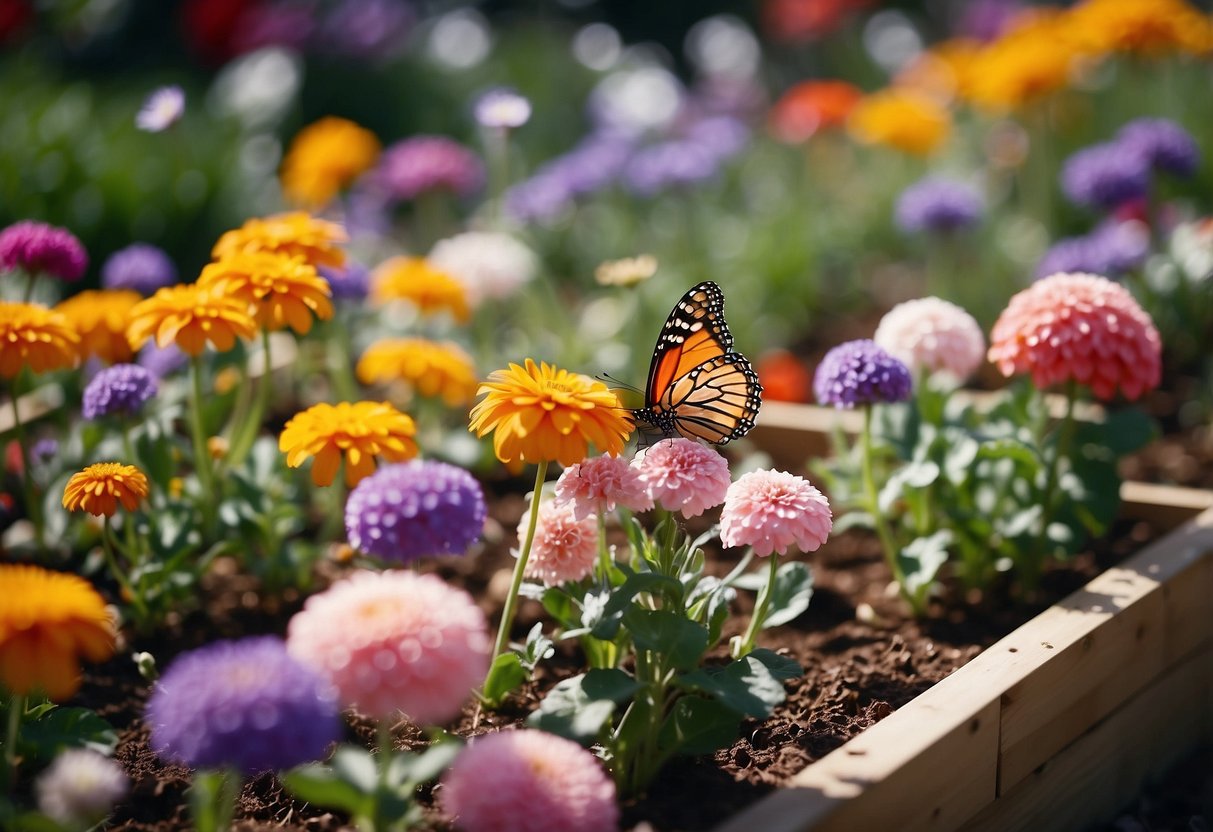
Creating butterfly-friendly flower beds in your classroom garden can be an exciting project. Butterflies are attracted to bright, colorful flowers. Planting a variety of nectar-rich flowers will keep these beautiful insects visiting your garden.
Include plants like milkweed and aster, which provide shelter and food for butterfly larvae.
Featuring sun-loving perennials such as goldenrod and snapdragons will ensure your garden is a top spot for butterflies throughout the growing season. A sunny location is best, as butterflies prefer warmth to stay active.
5) Vegetable Patch

A vegetable patch is a great way to teach students about gardening and healthy eating. Start by picking a sunny spot in your classroom or school yard.
Make sure the soil is well-prepared by removing weeds and mixing in compost. This helps plants grow better.
Choose easy-to-grow vegetables like tomatoes, carrots, or lettuce. Students can take turns watering and caring for the plants.
Label each plant with its name to help students learn to identify different vegetables. Watching the plants grow and eventually harvesting them can be a very rewarding experience. For more tips, check out this guide.
6) Trellised Climbing Plants
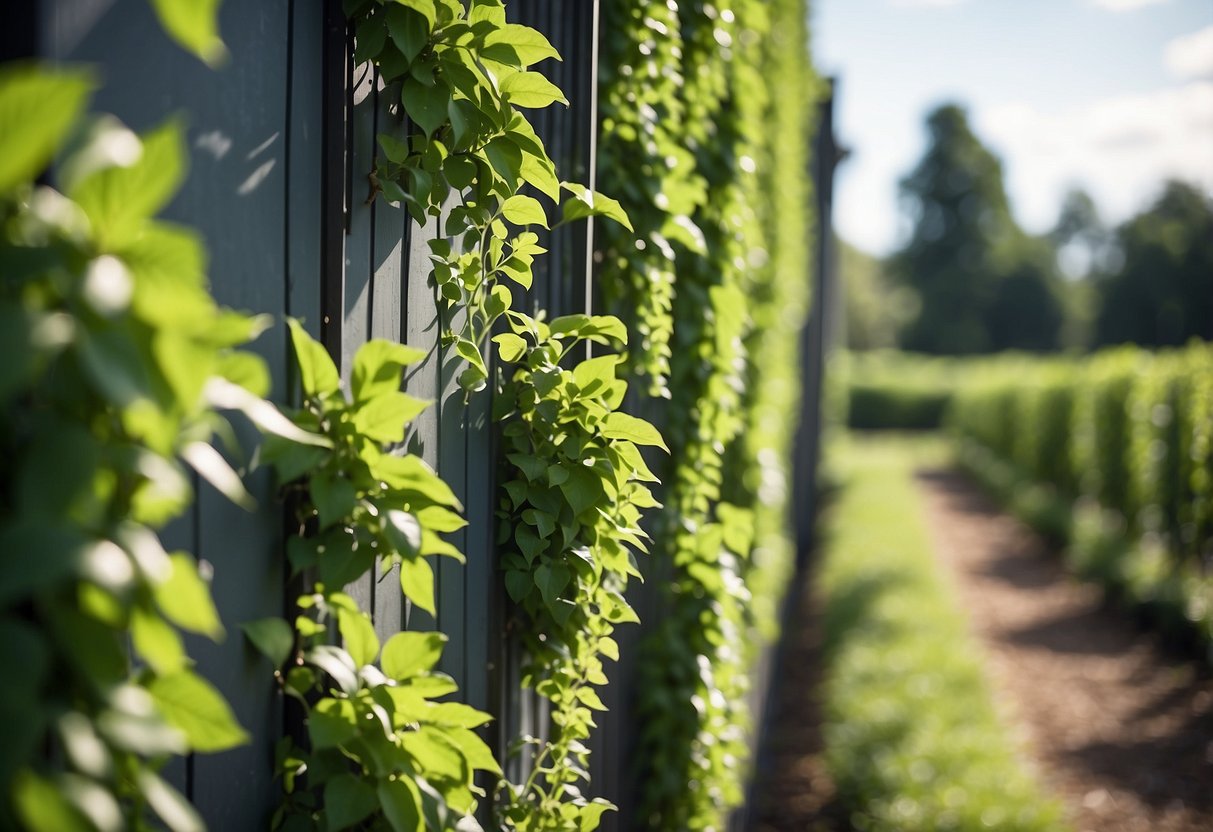
Adding trellises to your classroom garden can be a fun and educational project. Trellises provide support for climbing plants like sweet peas and beans. They can also make your garden look more organized.
An A-frame trellis is a sturdy option. It helps maximize space by letting plants grow vertically. You can easily build one using materials like chicken wire and wooden stakes.
Woven willow trellises add a whimsical touch. They blend natural aesthetics with functionality, making them perfect for fragile blooms and pea vines, according to these ideas.
Diamond-patterned trellises are another creative option. They create an eclectic accent and can be great for climbing ivy or flowering vines, as highlighted in this article.
Trellises not only support plant growth but also beautify your garden space. They make it easy to teach students about different plant types and growth patterns.
7) Pollinator Garden

A pollinator garden invites butterflies, bees, and other insects to your classroom. Planting native wildflower species is key. It helps attract local pollinators naturally.
Research which plants thrive in your area. Visit a local nursery for advice. You can also buy seeds online.
Try to include plants that bloom at different times. This keeps your garden lively and attractive for pollinators throughout the growing season. For more detailed ideas, check out this Pollinator Garden Toolkit for Schools.
8) Hydroponic Herb Wall

Creating a hydroponic herb wall in your classroom can be both fun and educational. You don’t need soil, which makes it less messy. Just set up a vertical frame and some hydroponic containers.
Use a nutrient solution to nourish the plants. This setup allows you to grow herbs like basil, mint, and parsley year-round.
Students can participate by measuring plant growth and learning about hydroponics. It’s a great hands-on activity that connects to science lessons. Plus, it brightens up the classroom with greenery and fresh scents.
9) Native Plant Section
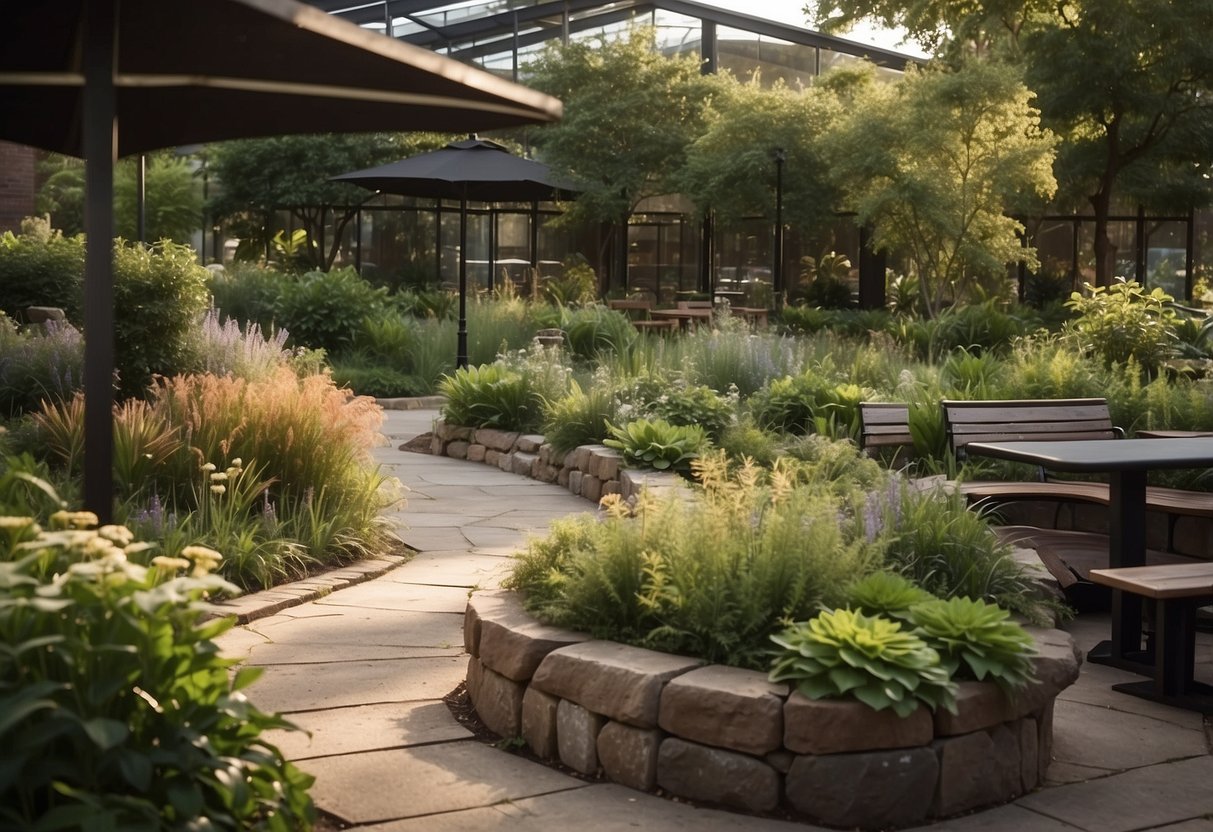
Adding a section for native plants in your classroom garden can be both educational and fun.
Native plants are local to your area, making them easier to grow and maintain. They also support local wildlife, such as birds and butterflies.
Consider creating a conservation corner in your classroom or garden. This space can display student-led projects and serve as a living classroom.
Planting native species helps students learn about ecology. Organizations like the California Native Plant Society promote using these plants in school gardens to teach the connection between plants and the ecosystem.
10) Fairy Garden with Tiny Doors
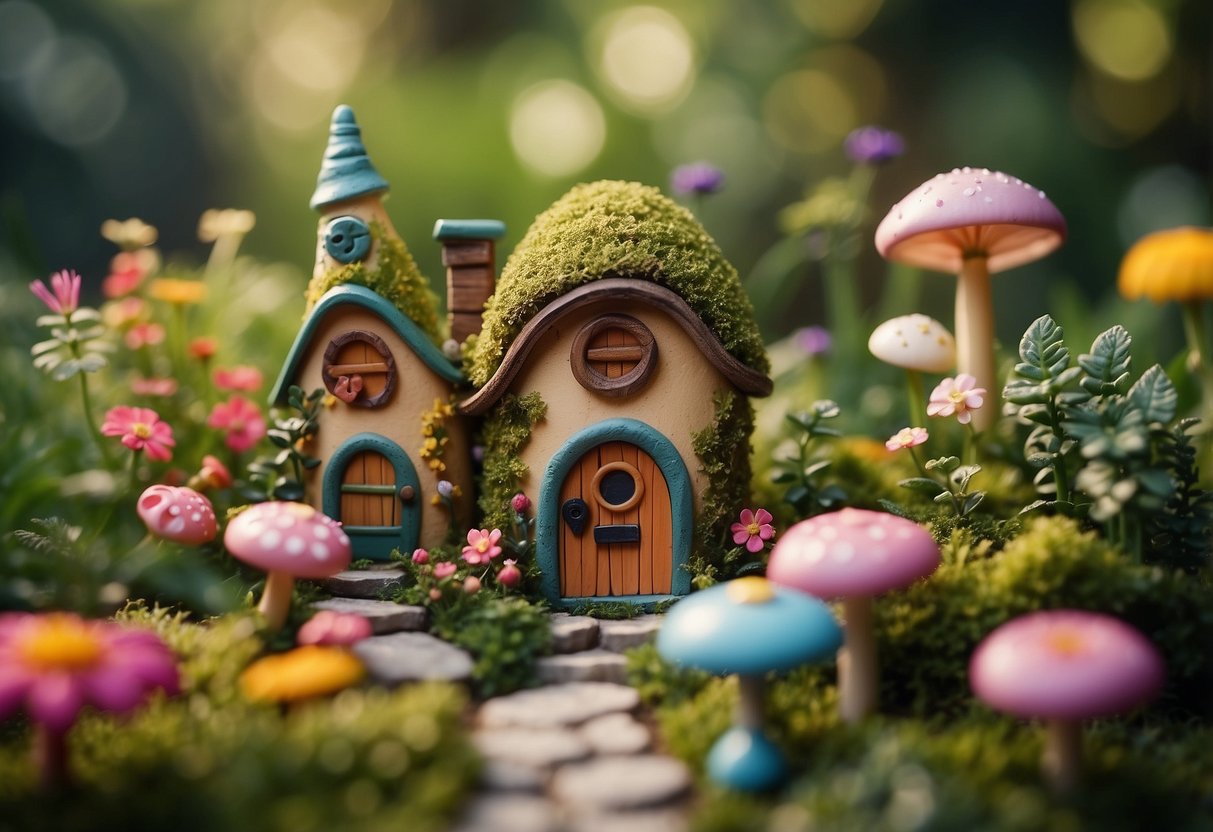
Creating a fairy garden with tiny doors is super fun for kids. You can use small logs or rocks to build miniature houses. Add some tiny doors and windows to make them look real.
Decorate with moss, twigs, and small plants like ferns or marigolds. Tiny figurines of fairies or woodland creatures make it even more magical. Let your imagination run wild and see what your garden becomes.
Using small toys or figurines adds charm and creativity to your garden. Keep it simple and enjoy the process!
Benefits of Classroom Gardens

Classroom gardens offer numerous benefits for students. They provide educational advantages, improve health and well-being, and positively impact the environment.
Educational Advantages
Classroom gardens are a great way to teach various subjects. For instance, students can learn about the parts of a plant or the plant life cycle through hands-on activities. They also get to practice math skills like measuring and counting.
Gardens teach responsibility. Students need to water and care for the plants regularly. This helps them understand the importance of consistency and patience.
Science lessons become more engaging when students see how plants grow and change. This real-life observation makes it easier for them to grasp concepts that can be abstract in textbooks.
Health and Well-being
Working in a garden has many health benefits. Physical activities like digging, planting, and weeding give students a chance to move and exercise. This is a good break from sitting in the classroom.
Gardens can also improve mental health. Being around plants and working in nature can reduce stress. It gives students a calming activity that can make them feel more relaxed and happy.
Eating fresh produce from the garden encourages healthier eating habits. Students are more likely to try and enjoy vegetables they have grown themselves.
Environmental Impact
Gardens teach students about sustainability. They learn how to compost and recycle organic waste, reducing the amount of trash that goes to landfills. This promotes an understanding of waste management.
Creating a worm composting bin in the classroom introduces students to the concept of decomposition. They see firsthand how worms help break down organic matter, enriching the soil.
Gardens also encourage respect for nature. As students observe plants grow, they develop a deeper appreciation for the environment and understand the importance of protecting it. This fosters a sense of stewardship towards nature.
Starting a Classroom Garden

Creating a classroom garden is a fun and rewarding project. You’ll need to find the perfect space, choose the best plants, and gather the right supplies.
Choosing the Right Space
Picking the right spot for your garden is crucial. Look for an area with plenty of natural light. Most plants need at least six hours of sunlight a day. If you can’t find a sunny spot indoors, consider using grow lights. These lights mimic sunlight and help your plants grow strong and healthy.
Think about the temperature of the space as well. Many plants thrive in warmer temperatures, so avoid drafty areas or spots near air conditioning vents. A consistent temperature will help your plants grow better.
Accessibility is also important. Make sure students can easily reach the garden to water, tend to, and observe the plants. Placing the garden at a height that’s comfortable for students to work on is key.
Selecting Suitable Plants
Choosing the right plants for your classroom garden can make the difference between a flourishing garden and one that struggles. Start with hardy and quick-growing plants like beans, lettuce, or herbs. These plants are easy to grow and will give your students a quick sense of accomplishment as they see results in just a few weeks.
Avoid plants that require a lot of space or special conditions unless you have the perfect setup. Small, compact plants are ideal for classrooms. Consider native plants or those that are well-suited to your local climate to reduce the need for special care.
For a fun experiment, you can try using cuttings from existing plants. This method allows students to see how plants can grow from a small piece of stem or root. It’s an exciting way for them to learn about plant reproduction.
Gathering Necessary Supplies
You don’t need a lot of fancy equipment to start a classroom garden. Here’s a simple list of essential supplies:
- Containers: Small pots, cups, or even recycled containers.
- Soil: Good-quality potting soil that’s suitable for the plants you’ve chosen.
- Seeds or Cuttings: Depending on the plants you want to grow.
- Watering Can or Spray Bottle: For easy watering.
Additional supplies like labels for each plant, a small shovel or trowel, and some fertilizer can also be helpful. If you have a budget, consider setting up a compost bin for organic waste. This can create rich soil and teach students about recycling and sustainability.
By gathering these supplies, you’ll be well-prepared to maintain a healthy and thriving classroom garden.







